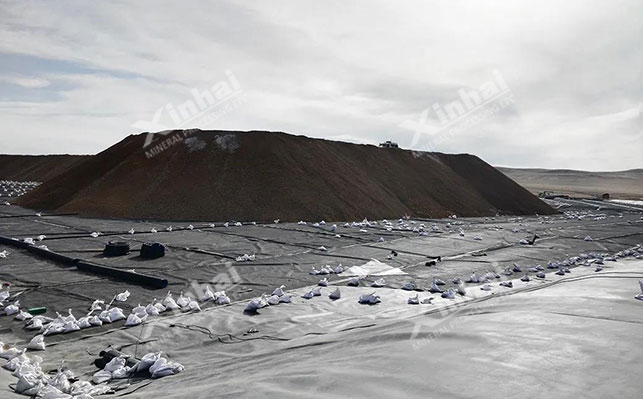In the context of rising gold mining costs year by year, heap leaching technology has become the preferred process for treating low-grade gold ores (typically defined as having a gold content of less than 1.5 g/t) due to its unique economic advantages and applicability. As a professional provider with 20 years of experience in EPCM+O services for mineral processing, we delve into the industrial application value of this technology to help you maximize resource utilization.

Ore Preparation—Scientific Pre-Treatment Lays the Foundation for Efficiency
Intelligent Crushing System: Through three-stage crushing (from coarse to fine), the ore particle size is precisely controlled between 20-50 mm, utilizing a laser particle size monitoring system to ensure porosity standards are met. Our developed "stair-step crushing method" can enhance permeability by 40%.
Innovative Design of Impermeable Layers: A double-layer composite impermeable structure (HDPE membrane + bentonite mat) is used, complemented by a leakage warning system, ensuring a permeability rate of ≤10⁻⁷ cm/s, far exceeding industry standards.
Leaching Process—Precise Control Achieves Efficient Extraction
Dynamic Spraying System: Equipped with GPS-located rotating nozzle arrays and IoT sensors for real-time monitoring of solution distribution, leachate coverage can exceed 98%.
Optimization of Leaching Parameters: A three-dimensional parameter model determined through experiments specifies sodium cyanide concentration (usually 0.05%-0.1%), pH (10.5-11.5), and spraying intensity (5-10 L/m²·h), allowing the leaching cycle to be shortened to 30-60 days.
Gold Solution Recovery—Innovative Adsorption Technology Enhances Recovery Rates
Cascaded Adsorption Process: A three-stage countercurrent activated carbon adsorption system (CIC process) is employed, paired with our patented "honeycomb structure" activated carbon, enhancing adsorption efficiency by 25% compared to traditional methods.
Intelligent Desorption Device: A high-temperature and high-pressure desorption tower (130°C, 0.35 MPa) combined with an electrolytic deposition system stabilizes gold recovery rates at 92%-96%.
Comprehensive Environmental Management
Cyanide Degradation System: A dual treatment process using H₂O₂ oxidation + SO₂/air method ensures wastewater cyanide concentration is<0.2 mg/L.
Ecological Restoration Plan: Utilizing microbial solidification technology to treat tailings, achieving a vegetation coverage rate of up to 70% within six months.
Intelligent Operation System
Our EPCM+O services include:
Central Control Platform: Integrating DCS + SCADA systems for remote monitoring.
Digital Twin Model: Predicting heap permeability anomalies through 3D modeling.
Energy Consumption Optimization Module: Real-time adjustment of pump station power reduces energy consumption by 30%.
| parameter | Traditional crafts | Heap leaching process |
|---|---|---|
| Processing grade(g/t) | 1.2 | 0.8 |
| Cost per ton of ore(USD) | 18.5 | 9.7 |
| Recovery rate(%) | 85 | 93 |
| IRR(%) | 22 | 35 |
Data Source: 2023 Congo Gold Heap Leaching Project Operational Report
IV. Directions for Technological Upgrades
Bioleaching Technology: Applying iron-reducing bacteria to pre-treat sulfur-containing ores, reducing cyanide usage by 40%.
Modular Heap Design: Movable impermeable systems enable rapid deployment, shortening construction time by 60%.
Real-Time Monitoring of Gold Solutions: LIBS laser spectrometers achieve real-time analysis of gold concentration.
As one of the few global service providers mastering the entire industrial chain technology of heap leaching, we offer comprehensive services from feasibility studies and engineering design to operational optimization.